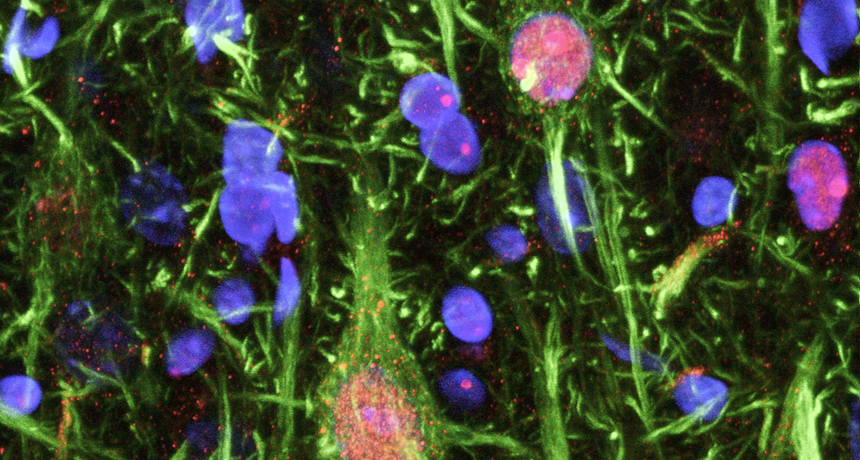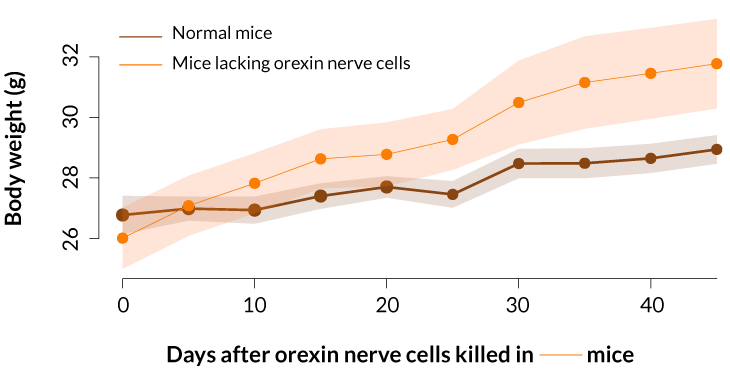Eating shuts down nerve cells that counter obesity
Mouse study offers hints of orexin’s role in weight gain and narcolepsy

DIET AID Nerve cells that produce a molecule called orexin (also known as hypocretin, pink) may counter obesity, a study of mice suggests.
C.J. Guerin, PhD, MRC Toxicology Unit/Science Source







